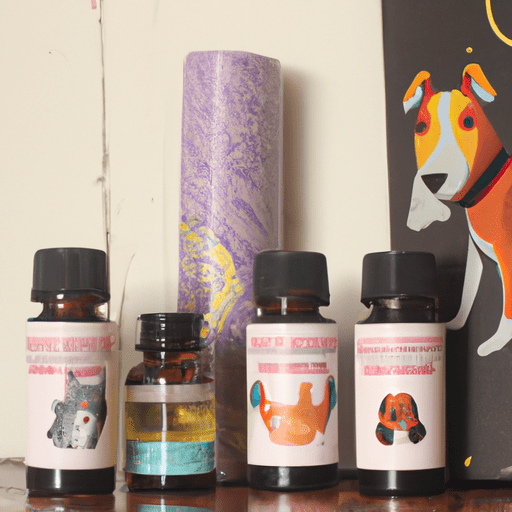“`markdown
What Essential Oils are Safe for Dogs and Cats?
As a caregiver, you’re always on the lookout for ways to improve the health and well-being of your beloved pets. Exploring the world of essential oils can be an exciting journey, but it’s crucial to remember that not all oils are created equal. Some are perfectly safe, while others can cause serious harm. So, what essential oils are safe for dogs and cats? Let’s dive in.
1. Essential Oils Safe for Dogs
Your dog is more than just a pet. They’re a cherished member of your family. It’s because of this deep bond that you approach their health with the same level of care and attention you would give to any human family member. Here’s a list of essential oils that are safe to use around your furry friend:
- Lavender: Known for its calming properties.
- Frankincense: Harnesses anti-inflammatory and immune-boosting abilities.
- Chamomile: Perfect for soothing skin irritations.
- Ginger: Ideal for aiding digestion and nausea.
Remember to always use these oils in moderation and consult with a vet before introducing any new elements to your dog’s routine.
2. Essential Oils Safe for Cats
Cats are notorious for their discerning attitudes, especially when it comes to their environment. But there are still a few essential oils you can safely introduce to their space:
- Cedarwood: Excellent for repelling pests.
- Lemongrass: Can help soothe skin irritations.
- Rosemary: Great for promoting a healthy coat and skin.
- Clary sage: Known for its calming effect.
As with dogs, always consult your veterinarian before using these oils on or around your cat.
3. Unsafe Essential Oils for Dogs and Cats
While some oils can enhance your pet’s health and happiness, others can pose a serious threat. Here’s a non-exhaustive list of oils to avoid:
- Tea Tree
- Cinnamon
- Garlic
- Peppermint
- Pine
4. How to Use Essential Oils Safely
When used correctly, essential oils can have positive effects on your pets’ health and well-being. Here are a few tips on how to use these oils safely:
- Always dilute the oils: Essential oils are potent. Dilution with a carrier oil can make them safer for your pet.
- Never apply directly to the skin: Instead, diffuse them in a room where your pet can choose to leave if they want.
- Don’t force the oils on your pet: If they resist or show signs of discomfort, stop using the oil immediately.
5. Essential Oil Safety Table
| Essential Oil | Safe for Dogs | Safe for Cats |
|---|---|---|
| Lavender | Yes | No |
| Frankincense | Yes | No |
| Chamomile | Yes | No |
| Ginger | Yes | No |
| Cedarwood | No | Yes |
| Lemongrass | No | Yes |
| Rosemary | No | Yes |
| Clary Sage | No | Yes |
FAQ
Q: Can I use essential oils in my pet’s food or water?
A: No, essential oils should never be ingested by pets.
Q: Are there any signs of essential oil toxicity I should watch for?
A: Symptoms can include drooling, vomiting, tremors, or difficulty walking. If you notice these signs, contact your vet immediately.
Q: How can I introduce my pet to essential oils?
A: Start by diffusing a small amount of a safe essential oil. Monitor your pet’s behavior. If they seem comfortable, you can gradually increase the amount.
Remember, when it comes to using essential oils with pets, safety should always come first. If you’re ever unsure, don’t hesitate to consult with a professional.
“`



